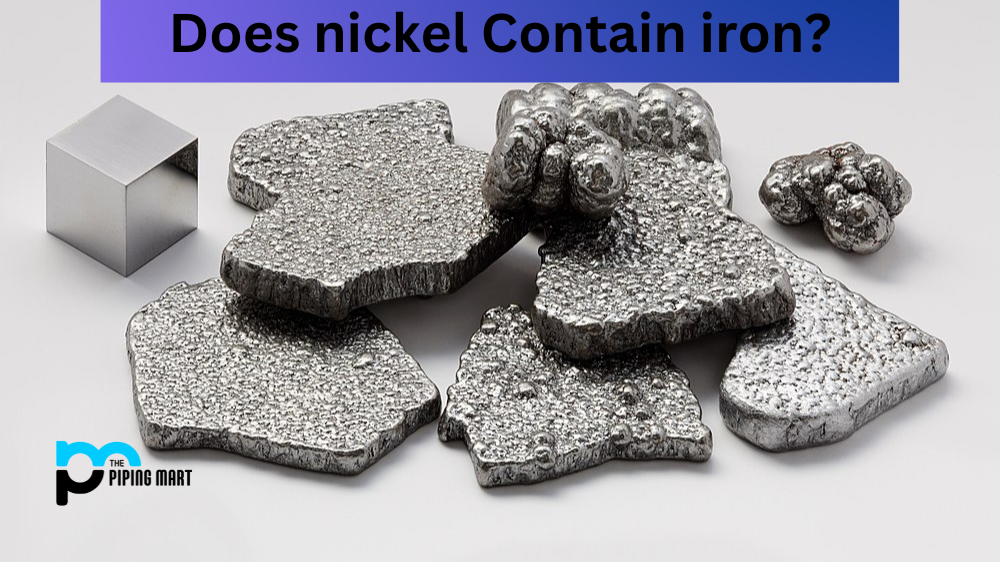Nickel is a chemical element that has a variety of uses in our daily lives. It is found in many alloys, batteries, and magnets. But does nickel contain iron? The answer is both yes and no. Let’s take a look at why.
The short answer is no, pure nickel does not contain iron, but it can be alloyed with other metals to form alloys that do contain iron. Nickel-iron alloys are used extensively in electronic products such as transformers and electric motors due to their excellent electrical conductivity and magnetic properties. They are also used for shielding against electromagnetic interference (EMI) due to their high permeability and low coercivity properties.
Alloying nickel with other metals allows the nickel to gain different properties that it would not have on its own. For example, adding iron to nickel increases its hardness and strength while also increasing its corrosion resistance. The addition of chromium further increases corrosion resistance while improving wearability and ductility. Other elements, such as cobalt, molybdenum, manganese, and silicon, can also be added to create an alloy tailored specifically for certain applications.
It’s important to note that the addition of these elements also affects the melting point of the alloy; for instance, nickel-iron alloys tend to have higher melting points than pure nickel due to increased atomic interaction between the metal atoms when combined into an alloy structure. This makes them more suitable for high-temperature applications such as turbochargers or turbine blades in jet engines.
Conclusion:
In conclusion, pure nickel does not contain iron but can be alloyed with other metals, such as iron or chromium which will result in a metal-containing both elements. These alloys are often used in industries where strength, corrosion resistance, electrical conductivity or magnetic permeability are needed—such as electronics or aerospace—where pure nickel would otherwise not be suitable for use due to its lack of those specific properties. Understanding what elements can be added to nickel-based alloys allows engineers and designers alike to create materials tailored specifically for their application needs without compromising on quality or performance.

Pipingmart is a B2B portal that specializes in metal, industrial and piping items. Additionally, we share the latest information and information about materials, products and various types of grades to assist businesses that are involved in this business.




